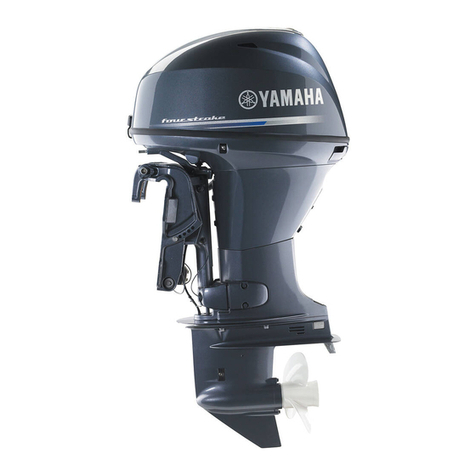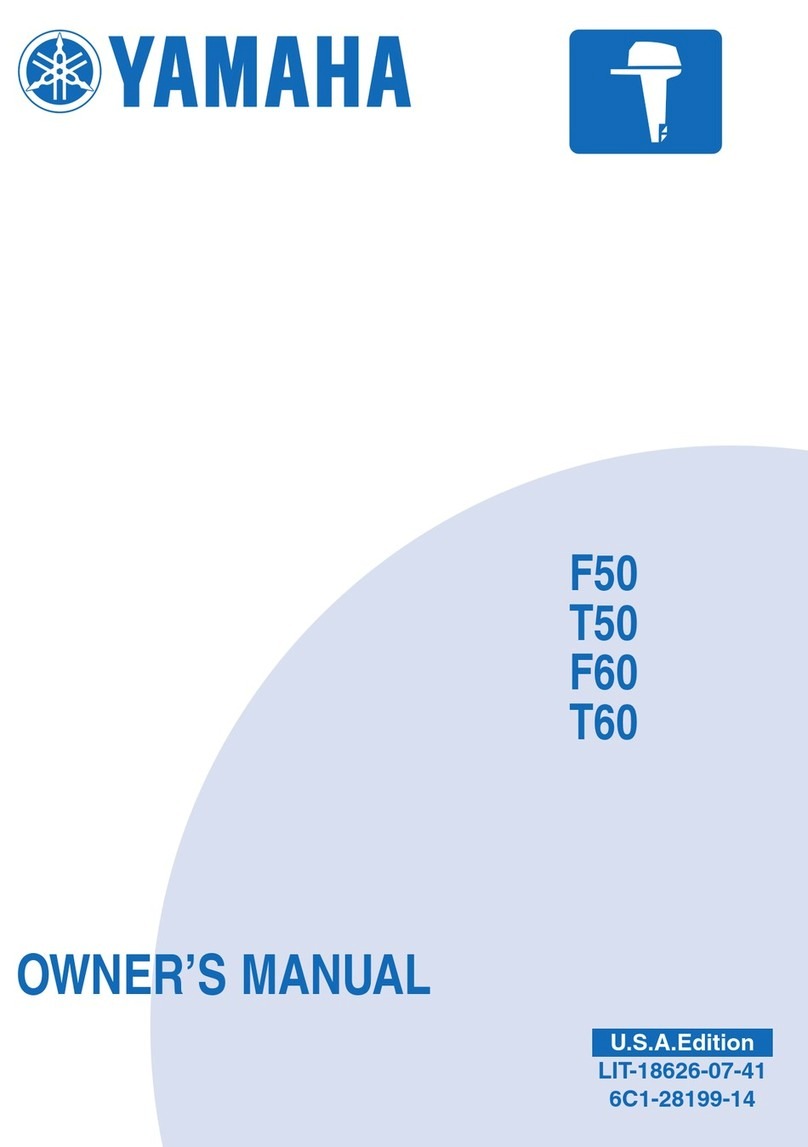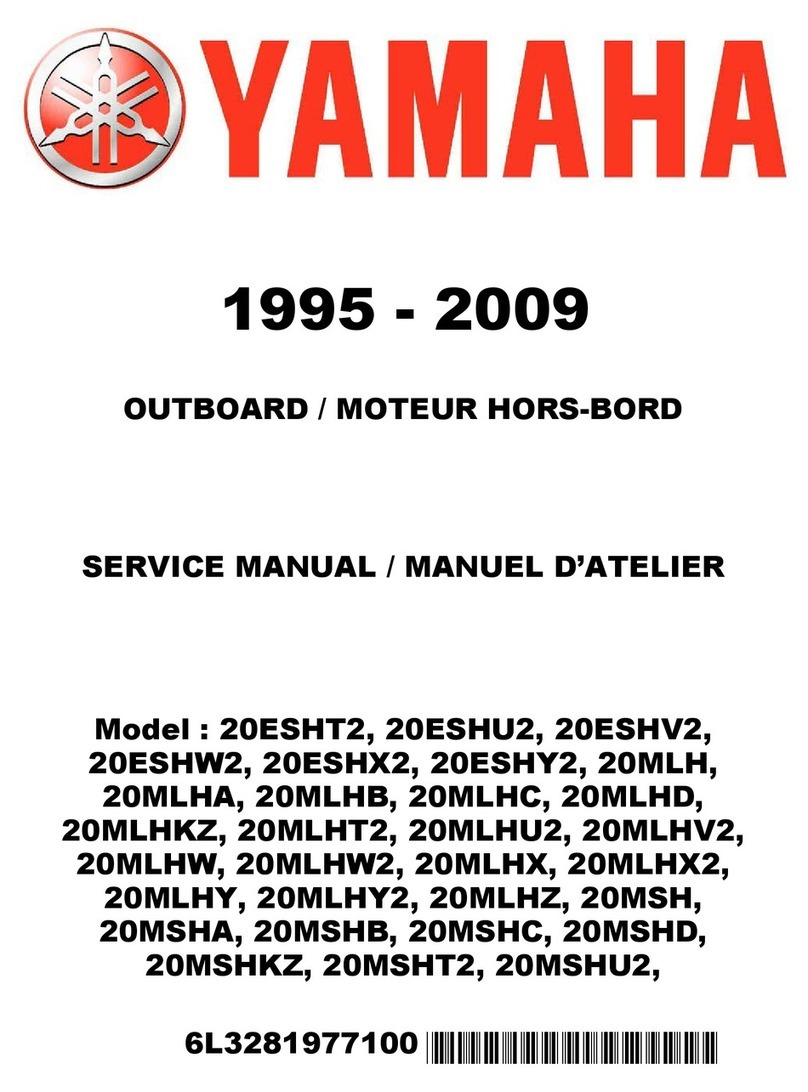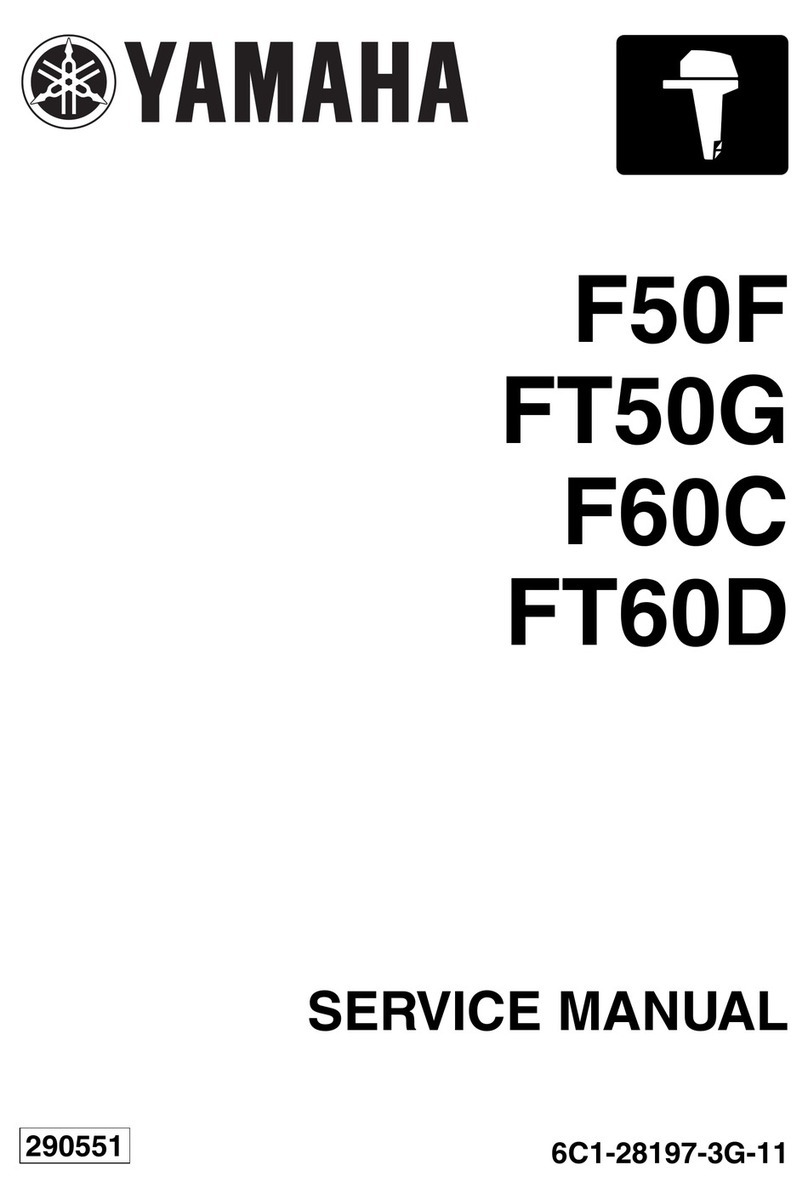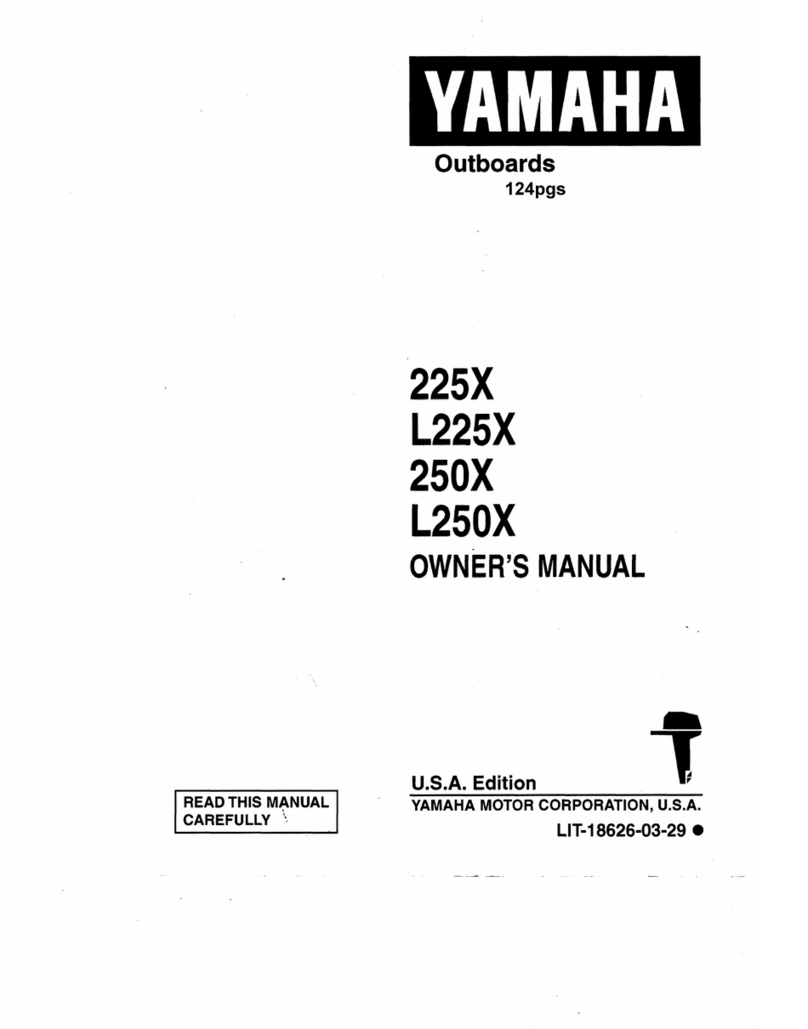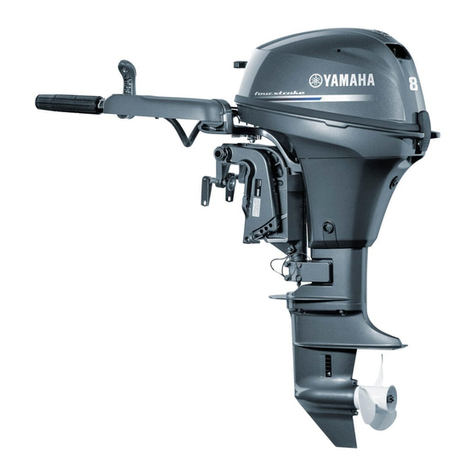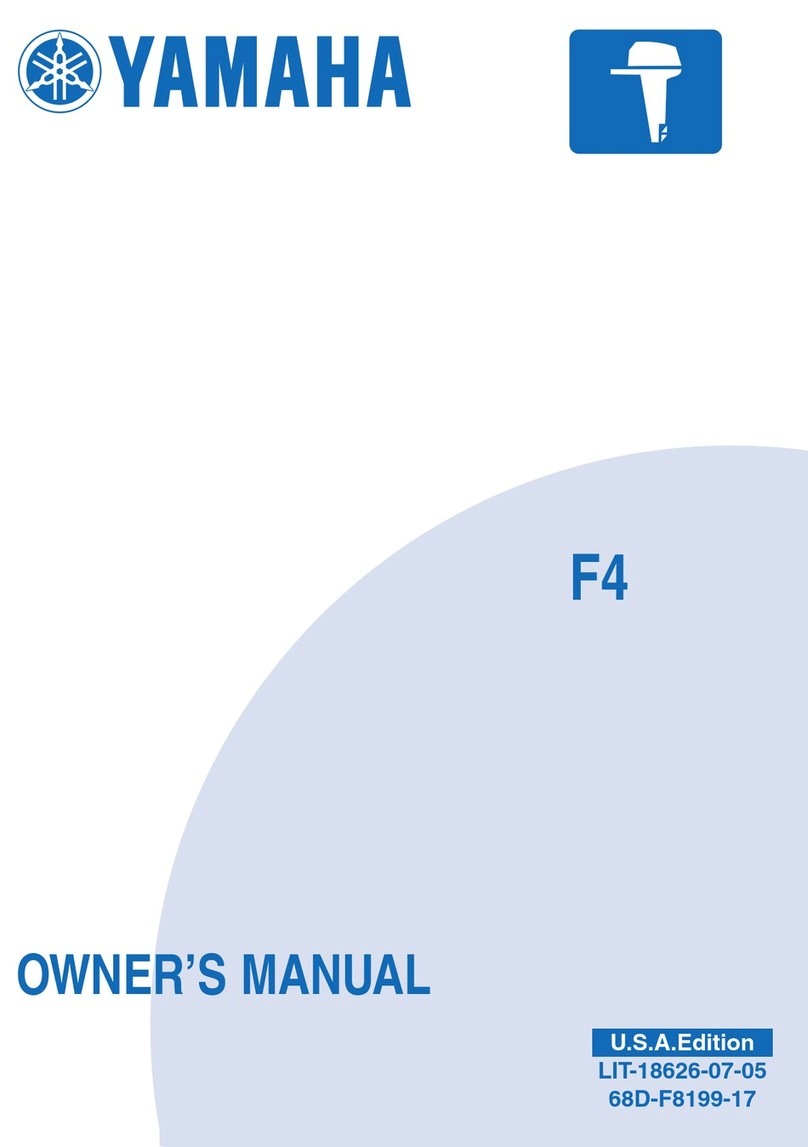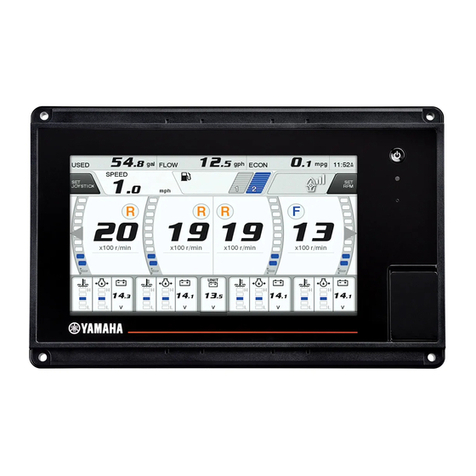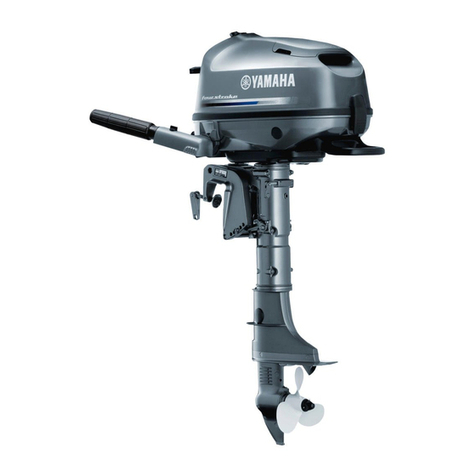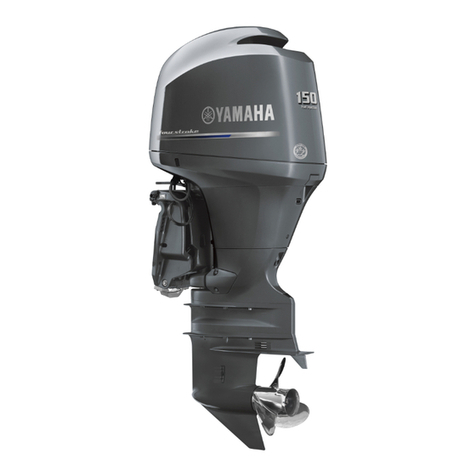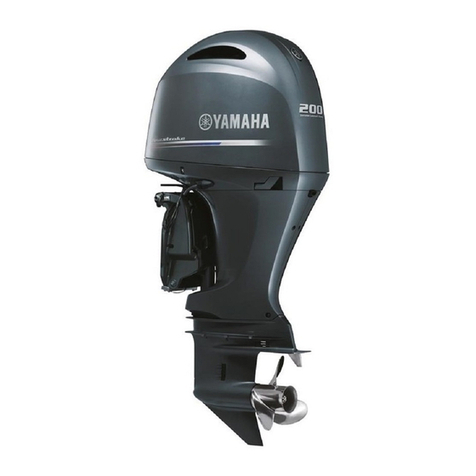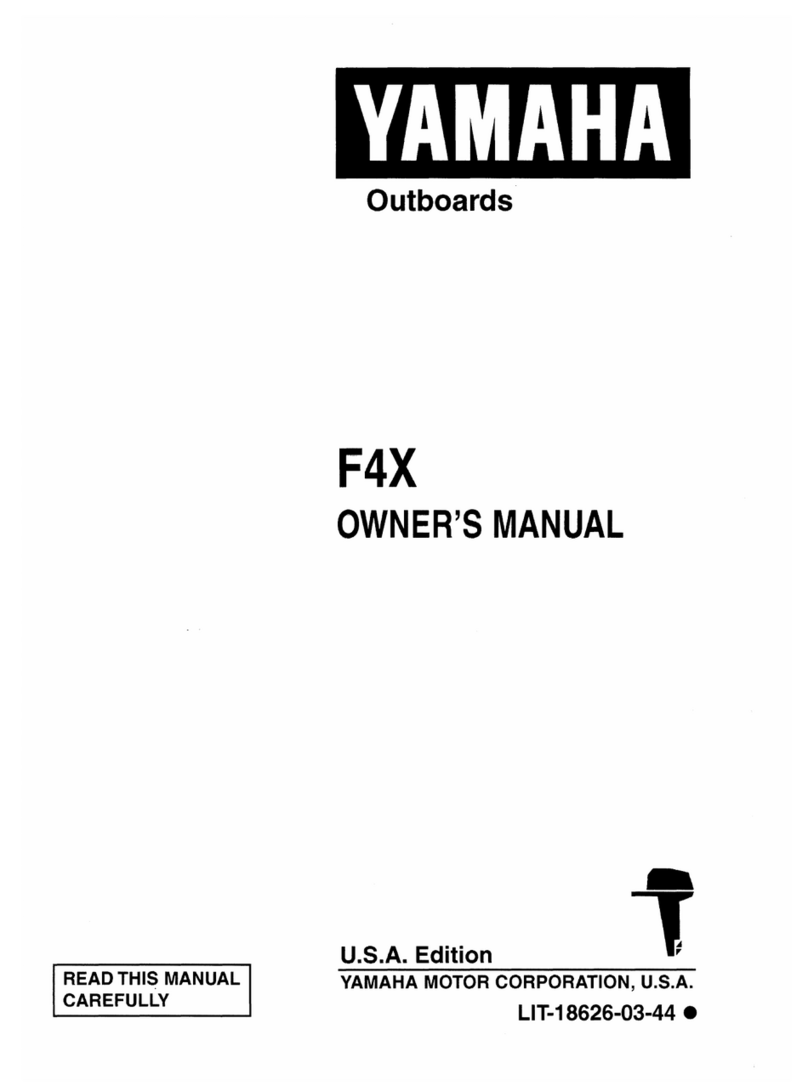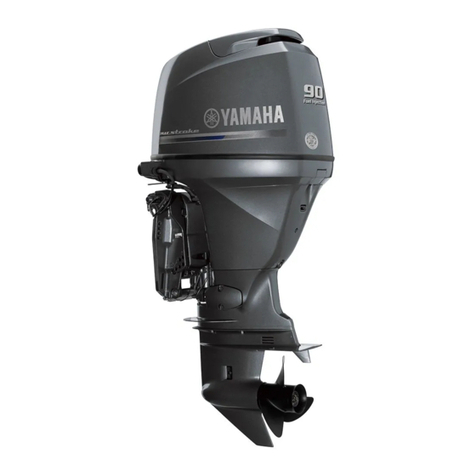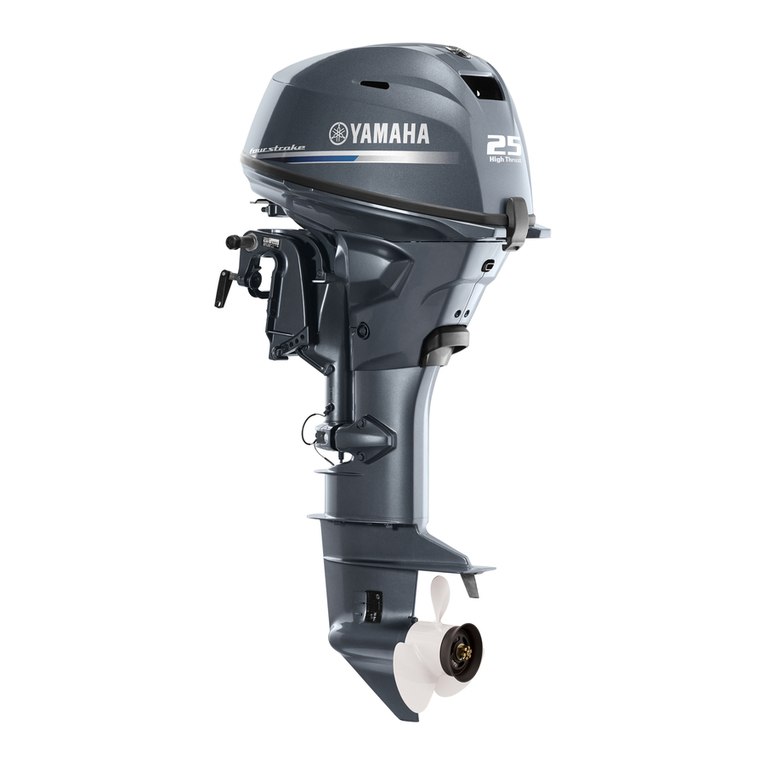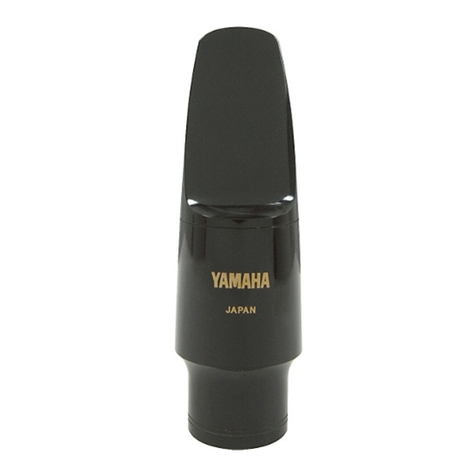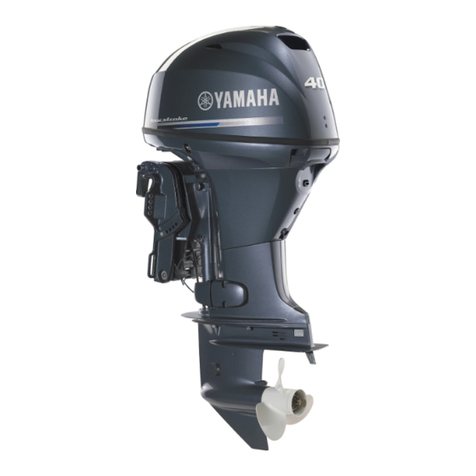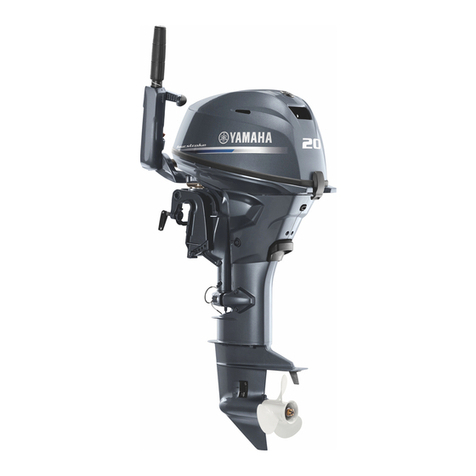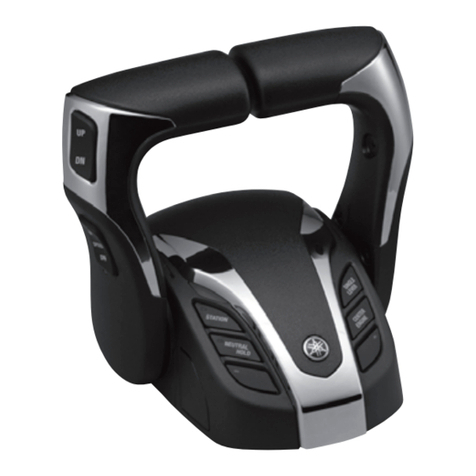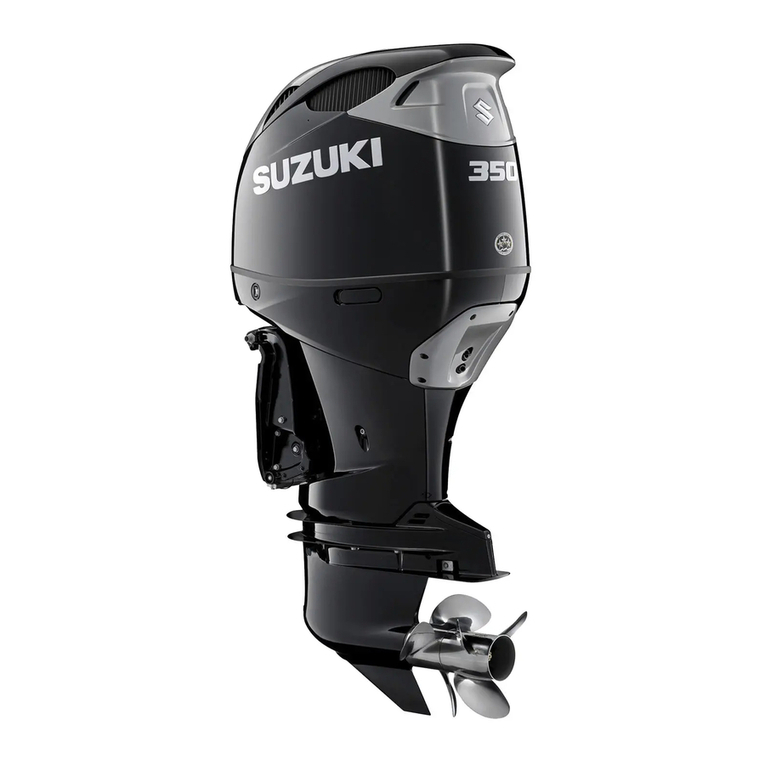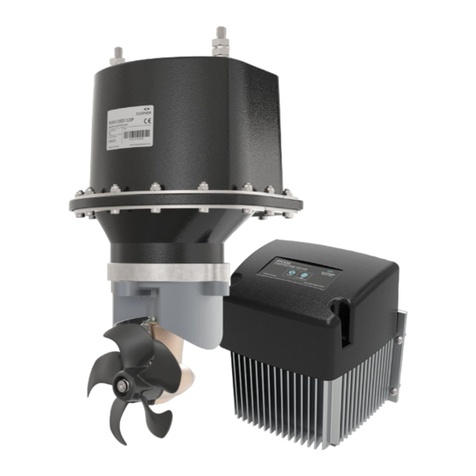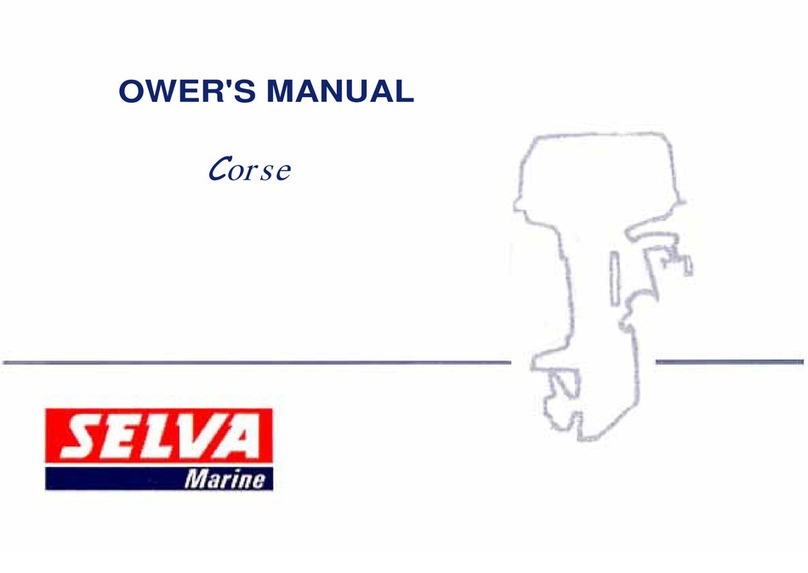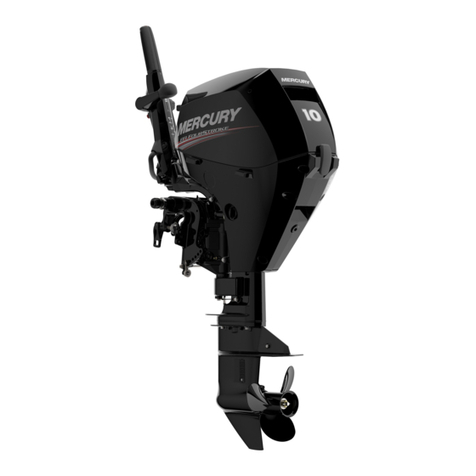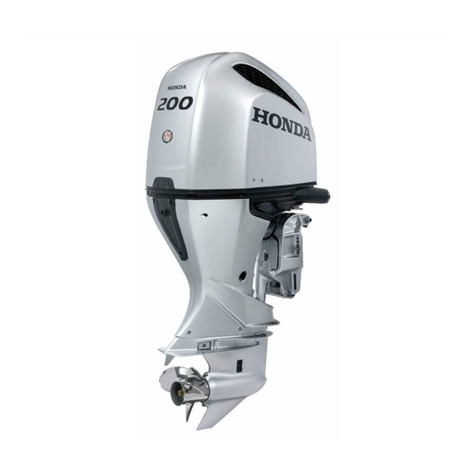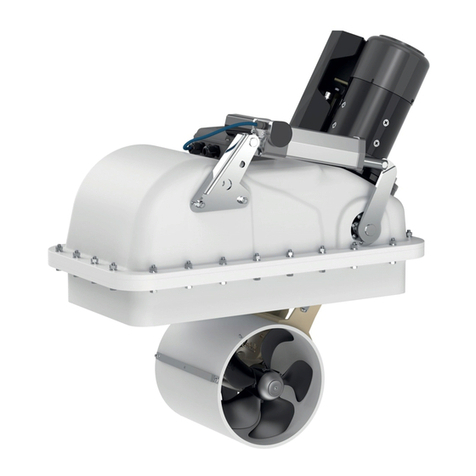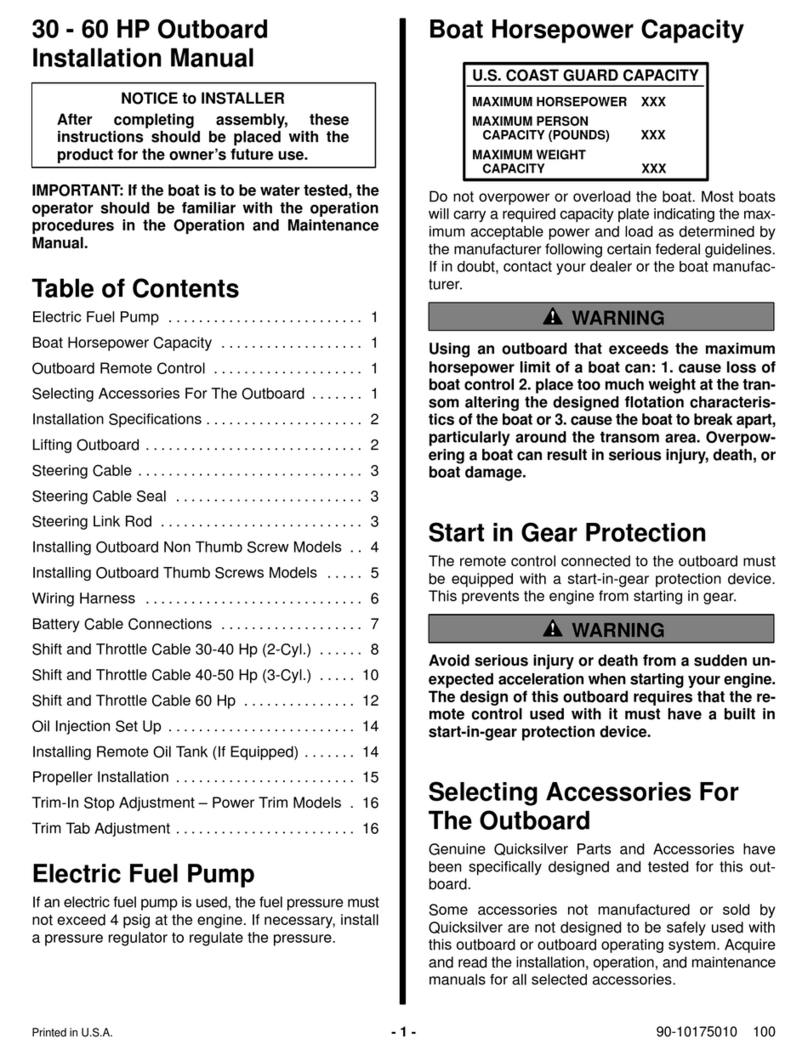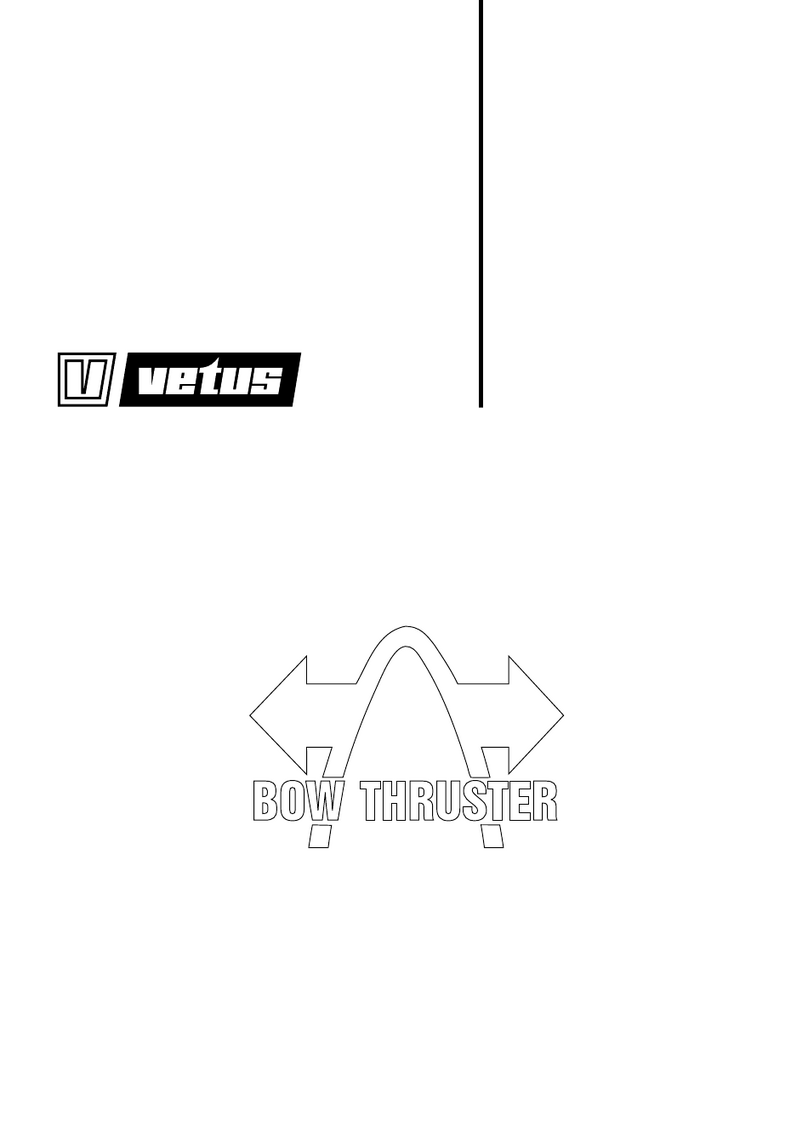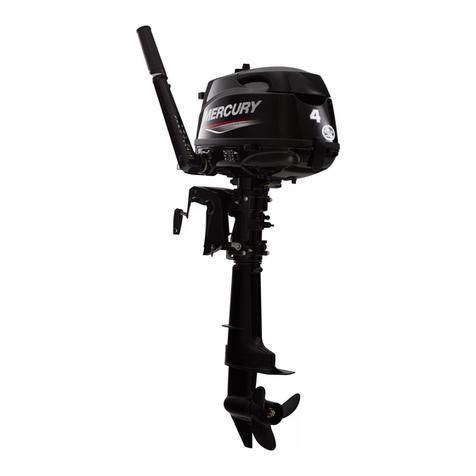Table
of
contents
Safety information............................ 1
Propeller
selection
........................
13
Outboard
motor
safety
....................
1
Start-in-gear
protection
.................
14
Propeller
.............................................
1
Engine
oil
requirements
................
14
Rotating
parts
.....................................
1
Fuel
requirements
.........................
14
Hot
parts............................................
1
Gasoline
...........................................
14
Electric
shock
.....................................
1
Power
tilt............................................
1
Engine
shut-off
cord
(lanyard)
............
1
Gasoline
.............................................
1
Gasoline
exposure
and
spills
.............
2
Carbon
monoxide
...............................
2
Modifications
......................................
2
Boating
safety
.................................
2
Alcohol
and
drugs..............................
2
Personal
flotation
devices
..................
2
People
in
the
water............................
2
Passengers
........................................
2
Overloading
........................................
2
Avoid
collisions..................................
3
Weather............................................. 3
Passenger
training
.............................
3
Boating
safety
publications................
3
Laws
and
regulations
.........................
3
General
information
..........................
4
Identification
numbers
record
..........
4
Outboard
motor
serial
number
...........
4
Key
number
........................................
4
EC
Declaration
of
Conformity
(DoC)........................................... 4
CE
Marking
.....................................
5
Muddy
or
acidic
water
...................
14
Anti-fouling
paint
...........................
15
Motor
disposal
requirements........
15
Emergency
equipment
..................
15
Components
....................................
16
Components
diagram...................
16
Fuel
tank..........................................
17
Fuel
joint...........................................
18
Fuel
gauge
.......................................
18
Fuel
tank
cap...................................
18
Air
vent
screw...................................
18
Remote
control
box
..........................
18
Remote
control
lever
........................
18
Neutral
interlock
trigger
....................
19
Neutral
throttle
lever
.........................
19
Choke
switch
....................................
19
Tiller
handle......................................
19
Gear
shift
lever
.................................
19
Throttle
grip
......................................
20
Throttle
indicator..............................
20
Throttle
friction
adjuster
....................
20
Engine
shut-off
cord
(lanyard)
and
clip................................................
21
Engine
stop
button
...........................
22
Choke
knob
for
pull
type..................
22
Read
manuals
and
labels...............
6
Manual
starter
handle......................
22
Warning
labels...................................
6
Main
switch......................................
22
Specifications
and
requirements...
10
Power
tilt
switch...............................
23
Specifications
................................
10
Steering
friction
adjuster..................
23
Installation
requirements
...............
12
Trim
rod
(tilt
pin)
...............................
24
Boat
horsepower
rating
....................
12
Tilt
lock
mechanism
..........................
24
Mounting
motor
................................
12
Tilt
support
knob...............................
24
Remote
control
requirements
........
12
Battery
requirements
.....................
13
Battery
specifications
.......................
13
Mounting
battery..............................
13
Tilt
support
bar
.................................
24
Power
tilt
unit...................................
25
Cowling
lock
lever
(pull
up
type)......
25
Flushing
device
................................
25
Alert
indicator
...................................
25
